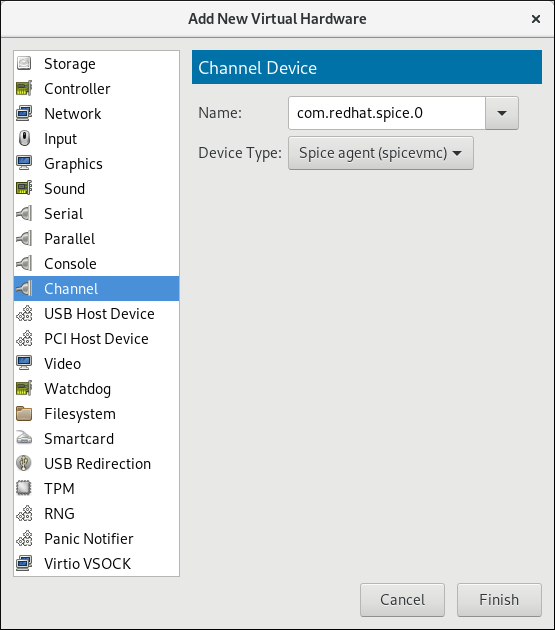

- #Spice usb redirector how to
- #Spice usb redirector install
- #Spice usb redirector driver
- #Spice usb redirector software
- #Spice usb redirector download
It is fully compatible with MATE and the lightweight LXDE and XFCE, but the server version will not work on the latest Gnome and KDE, without various tweaks and workarounds. The most critical of these is incompatibility with some of the modern desktop environments. While x2go is a very powerful RDP tool, it also has a number of serious disadvantages. The installation is also very easy, since both the server and the client require only a single package. It supports a number of useful features, such as desktop sharing and remote sound.Īnother important advantage of x2go is that desktop binding tools are available for all of the most common Linux graphical environments.
#Spice usb redirector software
This versatile RDP software needs a very low bandwidth, so it is very well suited for networks with poor speed. It has two components: the server part and the client, and is available for Windows, MacOS and the most popular Linux distributions. X2go is actually a complex terminal server software that provides many features, RDP being just one of them. We will review and compare three of the best options in this article. While some versions of the Windows operating system include a RDP client, alternative applications are better, with more features and multiple OS compatibility. RDP software must be usually installed on both the remote computer (which in this case acts like a server) and the client. Some of the largest IT companies in the world rely on RDP for critical maintenance work.
#Spice usb redirector install
They have many practical uses, from simple tasks such as helping a user install software or troubleshoot an issue to really complex system administration tasks. Normally as long as you don't have the vm focussed when you plug them in.Just like the name suggests, remote desktop applications (RDP) allow you to access a server remotely and fully control it. If you plug in a device while the vm does not have keyboard focus, it will not get redirected, so you can use usb devices After this make sure the vm has keyboard focus (so close the options menu), plug in a new USB device and watch it show up in your vm :) Feel free to yank it out again at any time :) Select the options menu entry and make sure that the "auto redirect newly plugged in USB devices" option is checked. To use the usb redirection connect to the vm with spicy running as root, so that it can access the device nodes under /dev/bus/usb.
#Spice usb redirector how to
Note that you can also create more / less then 3 usbredirection usb "ports", how to do this is left as an The debug=3 is not strictly necessary, but it gives some useful messages without flooding the qemu console with messages. device usb-redir,chardev=usbredirchardev3,id=us bredirdev3,debug=3 \ chardev spicevmc,name=usbredir,id=usbredircharde v3 \ device usb-redir,chardev=usbredirchardev2,id=us bredirdev2,debug=3 \ chardev spicevmc,name=usbredir,id=usbredircharde v2 \ device usb-redir,chardev=usbredirchardev1,id=us bredirdev1,debug=3 \ chardev spicevmc,name=usbredir,id=usbredircharde v1 \ Then to create 3 usbredir ports into which the client can then "plug" redirected devices add the following: And at the following to the qemu cmdline:
#Spice usb redirector download
If you're running qemu under Fedora-16 (or newer), or have build it from source with usbredirection support as explained in my previous blog post, then you can also let spice redirect usb devices from your client to the vm, to enable this you will first need to enable usb2 emulation in qemu, download this file, and drop it in /etc/qemu. *** Enabling support for usb redirection *** device virtserialport,chardev=vdagent,name=com.r edhat.spice.0 chardev spicevmc,id=vdagent,name=vdagent \

#Spice usb redirector driver
To really enjoy spice, with all its features like copy paste between client and guest, and client mouse mode (mouse cursor drawn by client, so 0 mouse lag), you need to install the qxl graphics driver and spice-agent in the guest, *and* enable the agent channel between the guest and the client, to do this add the following options to the qemu cmdline: vga qxl -spice port=5932,disable-ticketingĪfter launching qemu with this, you can connect to it with spicy (new gtk based client) or spicec (old libX11 client), like this in order to add spice add the following to the cmdline: So here is a quick howto.īesides adding the usual qemu cmdline options to make it find the harddisk to boot from, have a NIC, soundcard, etc. Various people have been asking how to run qemu with spice when launching qemu directly, rather then through libvirt + virt-manager.


 0 kommentar(er)
0 kommentar(er)
